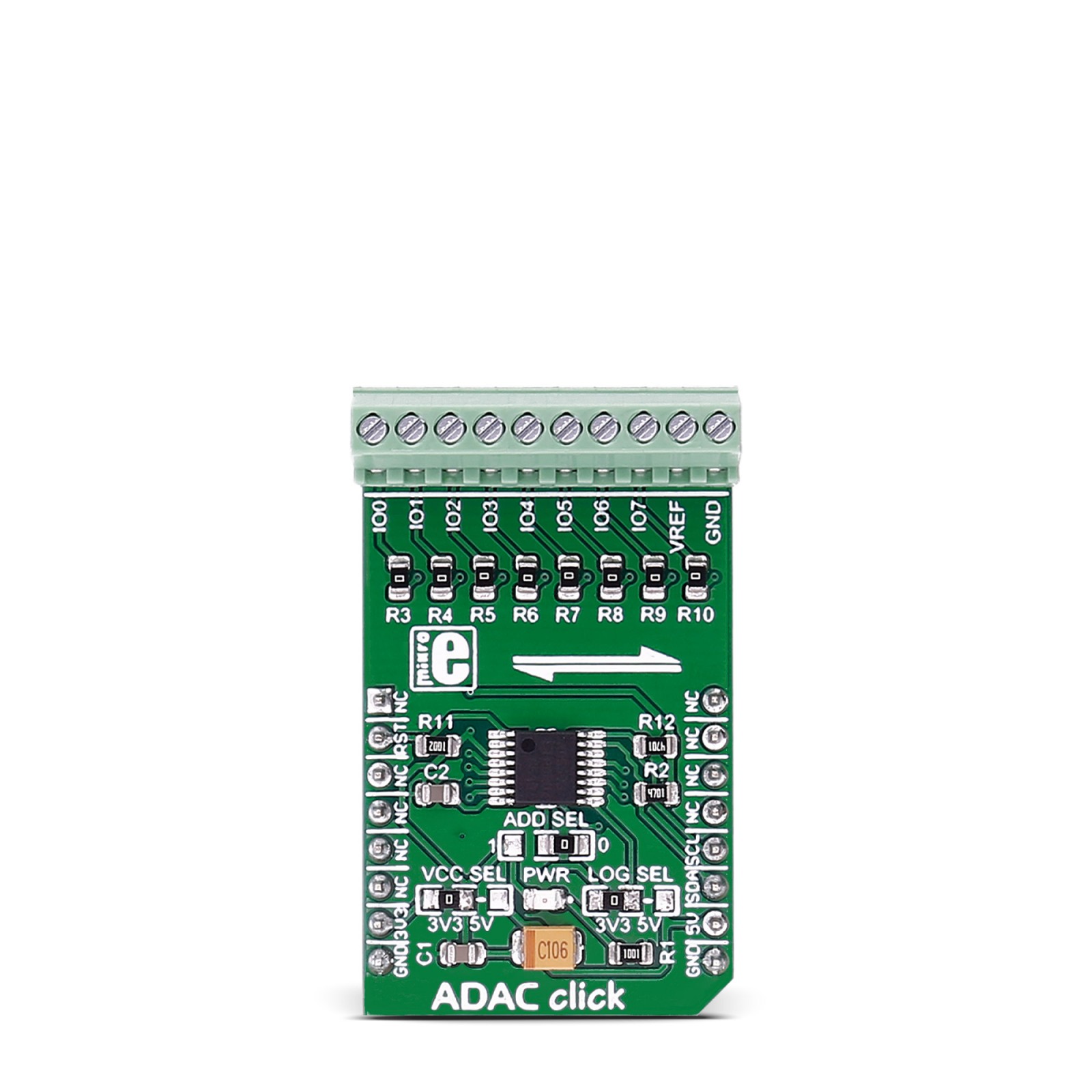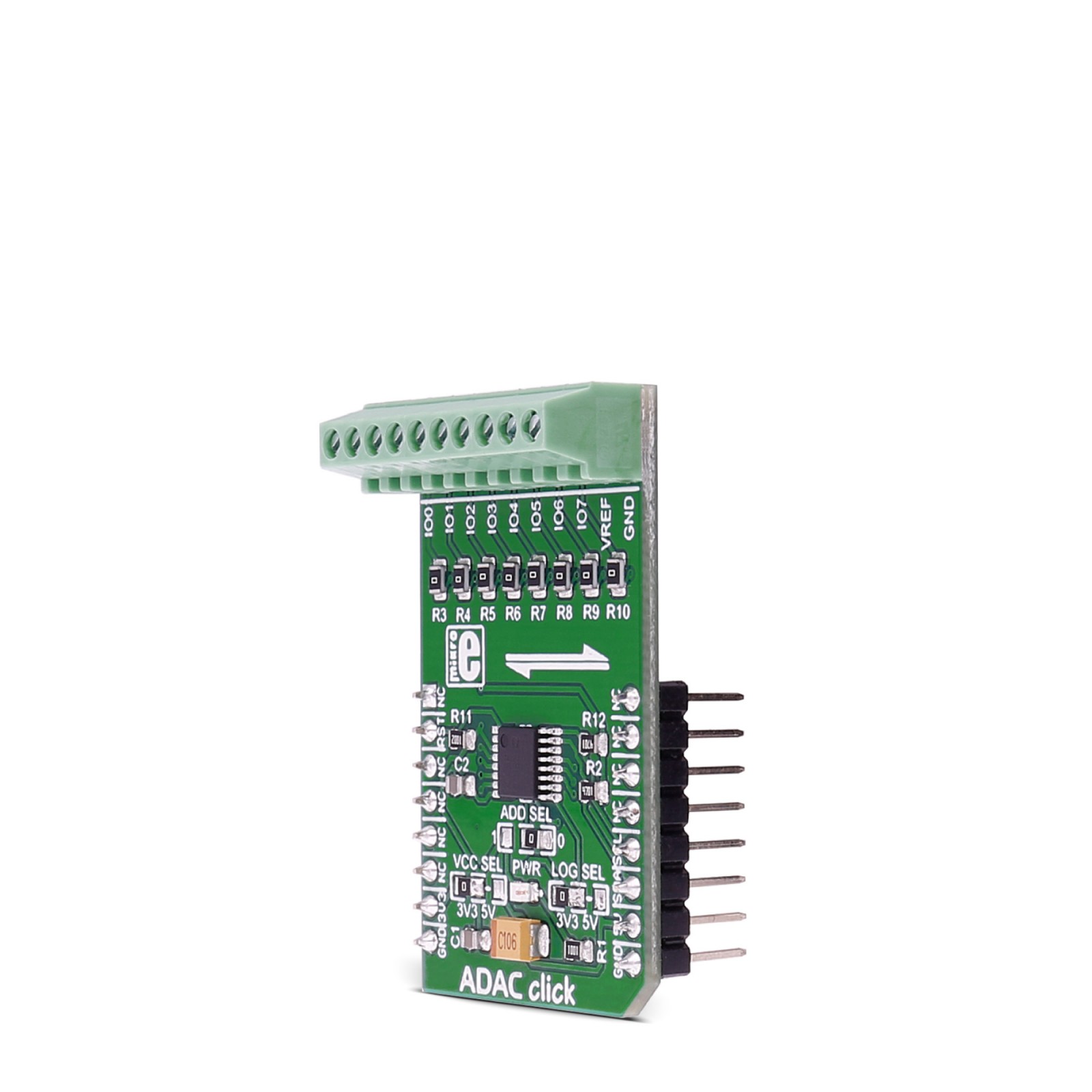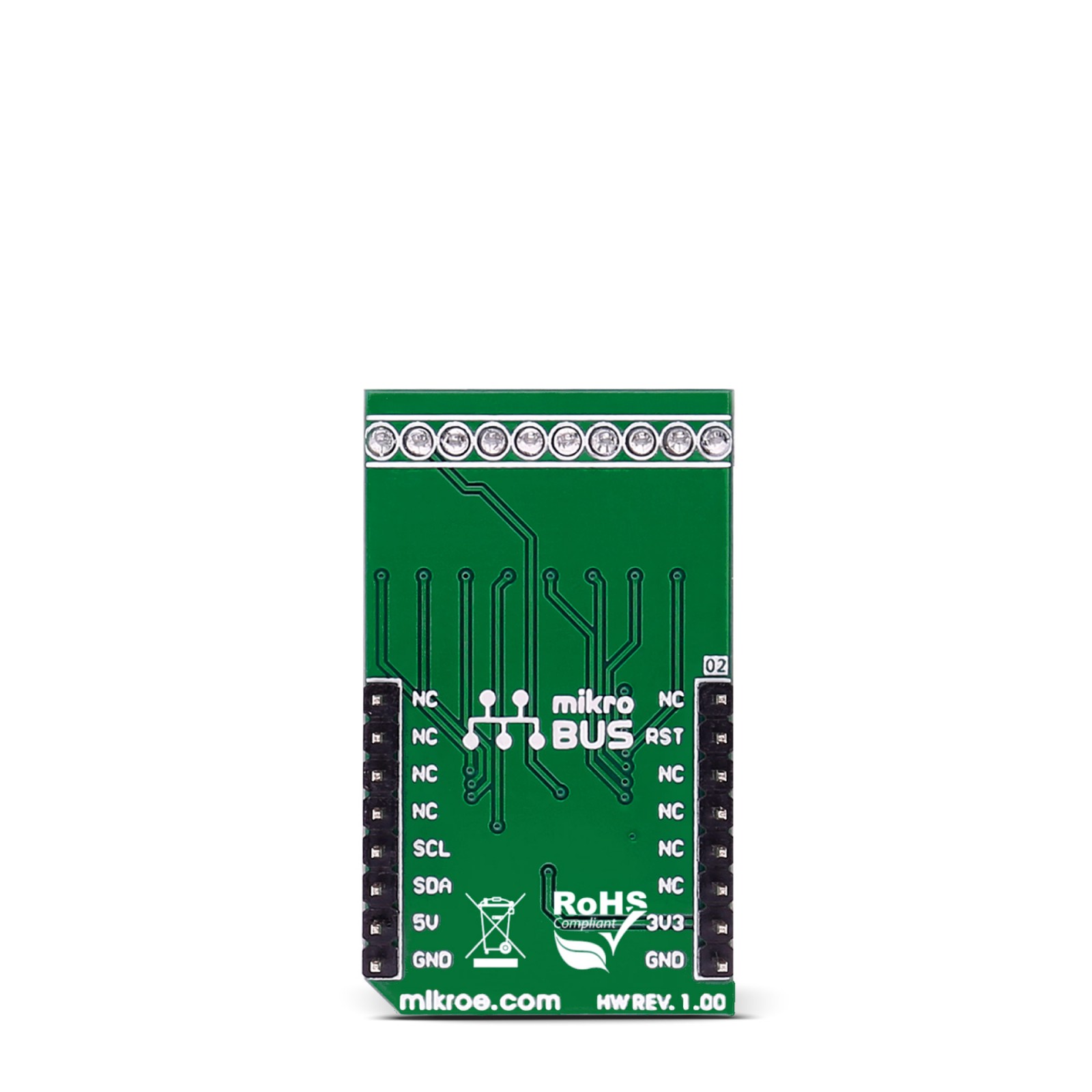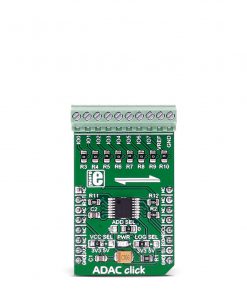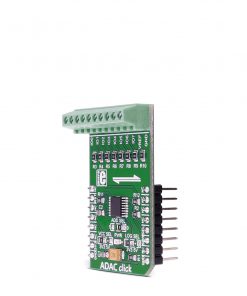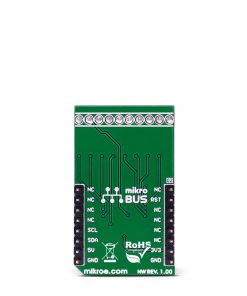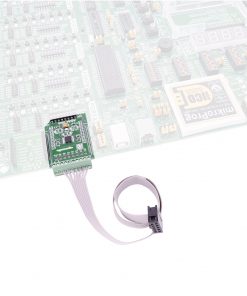ADAC Click
R780.00 ex. VAT
ADAC Click is a compact add-on board that provides the ADC/DAC combo solution. This board features the AD5593R, an 8-channel configurable ADC/DAC with an on-chip reference from Analog Device. Each of the eight channels can be set individually as analog-to-digital converters (ADC), digital-to-analog converters (DAC), digital inputs, or digital outputs. The AD5593R has an integrated 2.5V, 20ppm/°C reference that is turned off by default, as you can use an external reference over the dedicated terminal pin. This Click board™ makes the perfect solution for the development of control and monitoring applications, general-purpose analog and digital IO, and more.
ADAC Click is supported by a mikroSDK compliant library, which includes functions that simplify software development. This Click board™ comes as a fully tested product, ready to be used on a system equipped with the mikroBUS™ socket.
Stock: Lead-time applicable.
| 5+ | R741.00 |
| 10+ | R702.00 |
| 15+ | R663.00 |
| 20+ | R638.04 |

